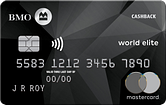Credit cards throughout most of the world are the same size: 85.6 mm × 53.98 mm, or 3.370 in × 2.125 in. These standardized sizes mean you can easily pop your card into any ATM or point-of-sale system.
Of course, there are reasons why this standardized size and other details were implemented, and we cover them in the article below.
Key Takeaways
- All credit and debit cards measure 85.6 mm × 53.98 mm.
- An International Organization for Standardization (ISO) standard dictates the size of payment cards around the world.
- Credit cards are typically made of plastic, but some are made of metal, which means that card weights may vary.
Never miss an amazing deal again + get our bonus 250+ page eBook for FREE. Join 50,000 other Canadians who receive our weekly newsletter – learn more.
All credit cards have the same dimensions
No matter where you’re located or which bank your credit or debit cards are from, they will always have the same dimensions.
Credit and debit cards must follow the international standard: 85.6 mm × 53.98 mm, which is 3.370 in × 2.125 in. They have the same rounded corners and a uniform thickness of 0.76 mm.
What are credit cards made of?
Most credit card companies make plastic credit cards – usually PVC.
That said, some issuers do issue metal credit cards. These cards are more durable than plastic cards, and at least in Canada, they're reserved for more premium cards like the American Express Aeroplan Reserve Card and the American Express Platinum Card.
Why do credit cards have a standard size?
Credit cards have a standard size so they’ll work anywhere in the world.
Think about it: the last thing you want is to be in a foreign country and your card won’t fit into the payment terminal or ATM.
Thanks to the International Organization for Standardization, also known as ISO, we have international standards. One such standard covers the sizes of credit and debit cards – ISO 7810 ID-1.
You can rest easy knowing that your credit card will work just about anywhere.
The history of credit card size
Believe it or not, some of the earliest versions of credit cards in the 1900s were made of paper, metal, and cardboard. As credit cards gained popularity in the mid-20th century and banks began issuing their own credit cards, the ISO issued regulations about the size of credit cards.
Credit card size will likely stay the same for the foreseeable future, but the technology in the cards is always being updated and improved.
Credit card weight can vary
There are no standards for how much a credit card should weigh – it depends heavily on the material.
Plastic cards tend to weigh, on average, about 5 grams each. Metal cards, on the other hand, are substantially heavier at about 15 grams. These numbers may vary by card.
FAQ
What is the credit card size?
All Canadian credit cards (and those from other countries) must be 85.6 mm × 53.98 mm. This specific size credit card conforms to international standards so that credit cards can be used interchangeably in most international locations.
Which credit card is best?
The best credit card in Canada (and for eight years running) is the American Express Cobalt® Card. The card is easy to qualify for, earns some of the highest reward rates, and has a generous welcome bonus.
Why are all credit cards the same size?
Credit cards are used by travellers around the world who need to be able to access their money easily. The cards need to be a uniform size so they fit into payment processing systems and ATMs around the world.
Are credit cards and debit cards the same size?
Yes, they are the same size: 85.6 mm × 53.98 mm. Since credit and debit cards can both be inserted into ATMS and payment processing machines, they need to have the same dimensions.
creditcardGenius is the only tool that compares 126+ features of 228 Canadian credit cards using math-based ratings and rankings that respond to your needs, instantly. Take our quiz and see which of Canada's 228 cards is for you.









 GC:
GC: 



































 $100 GeniusCash + Earn up to 15,000 Welcome Bonus Membership Rewards® Points.*
$100 GeniusCash + Earn up to 15,000 Welcome Bonus Membership Rewards® Points.*
Comments
Leave a comment
Required fields are marked with *. Your email address will not be published.